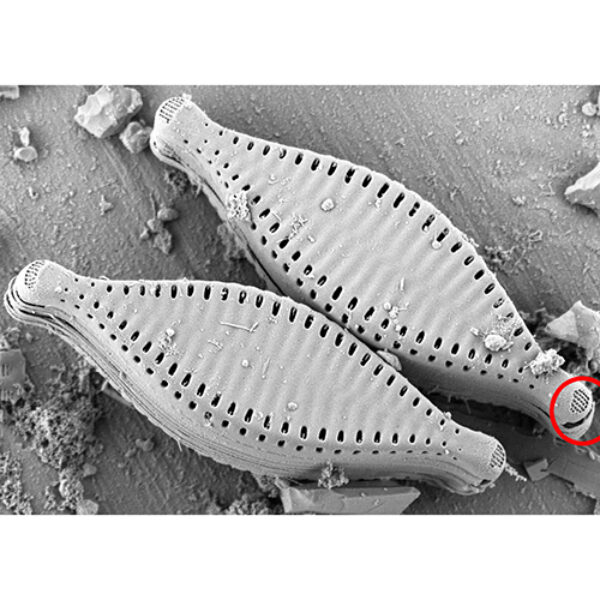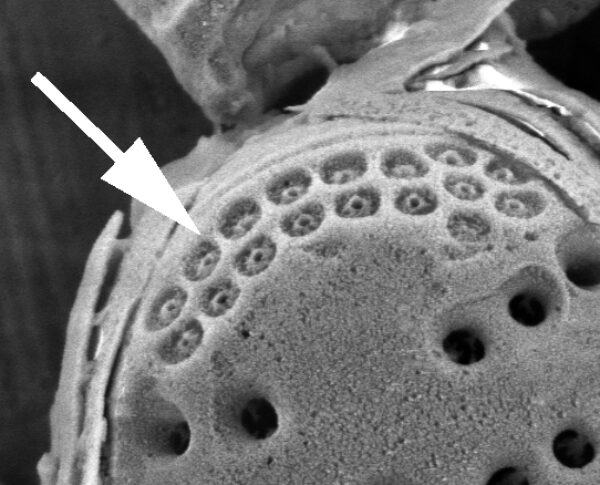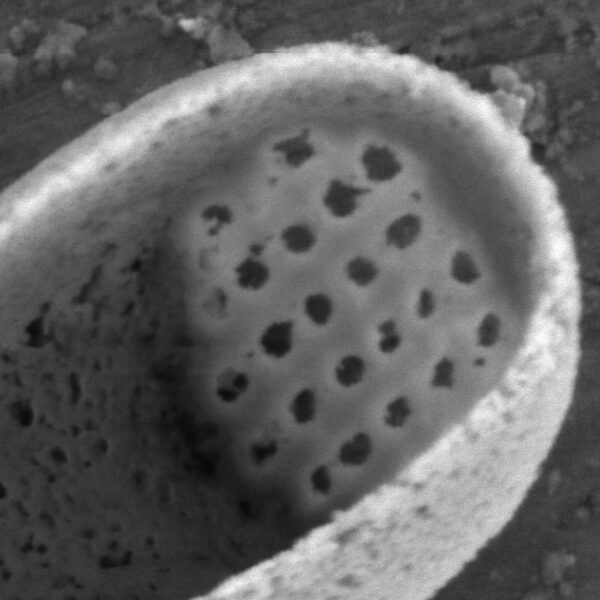Glossary
Like the rest of this website, the glossary is a work in progress. If we’ve missed a term, please contact us to let us know the term and references.
Ocellulimbus
An ocellulimbus is a type of porefield found on a valve apex. Externally, the ocellulimbus appears to be set into the apex of the valve. Like other porefields, the ocellulimbus likely secretes mucopolysaccharides which are used to attach the diatom to a substrate or to sibling cells. From Latin for little eye (ocellus) and border (limbus). The plural is ocellulimbi.
Ocellulimbi are found in several araphid genera such as Catabombas, Ctenophora, Pseudostaurosira, Synedra, and Tabularia.
Williams (1986) defined ocellulimbus as a "plate set into the polar valve mantle".
See ocellus, porefield, and pseudocellus for more detail.

Image Credit: Eduardo A. Morales

Image Credit: Eduardo A. Morales

Image Credit: Eduardo A. Morales; Material: Peter Siver
 Diatoms of North America
Diatoms of North America

